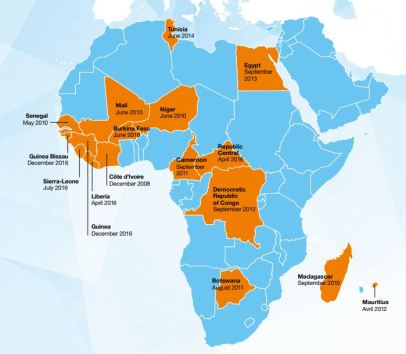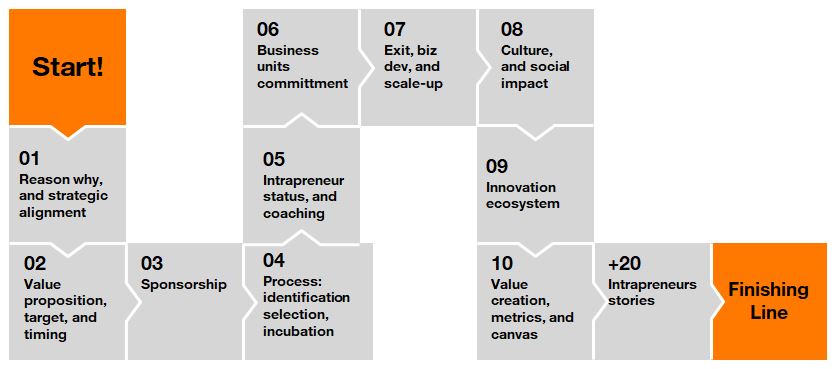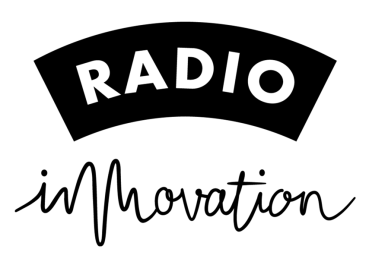Guest Post from Nicolas Bry
How to transform innovative bottom-up initiatives into a movement spread across the company? How to scale your innovation program widely? Here are a few lessons learned from creating innovation programs in Europe, and tweaking them to Africa and Middle-East contexts.
Leveraging local and global innovation
Supplementing wisely central techno-pushed innovation with local innovation, closer to the fields and to the user needs, opening new windows of opportunities, is the goal of the open and local innovation approach developed for Orange Africa.
The purpose is to balance the technical expertise from a central innovation division, with the possibility of bottom-up initiatives, experimenting locally up to 100 innovative solutions every semester with the circa 20 countries where Orange operates in Africa and Middles-East.
The local innovation focus is on agility, pragmatism, and value created for the users and for Orange business, while leveraging a key technological asset that Orange can bring to the innovative service.

One emblematic story is the birth of Orange Money, a mobile money service solving the problem of money transfer and payment for unbanked people. The idea was born in Kenya, and it clearly could not have emerged in Europe where everyone is banked, even kids! Orange developed centrally a platform capable of supporting all African countries in their progressive roll-out over 18 countries: ten years later, 50 millions users signed in for Orange Money. Furthermore, the central Orange Money platform enables local developments blossom, tailored to each country needs, and being picked-up, and replicated from one country to another over the region.
This is probably the most brilliant innovation of Orange over the decade, still no cutting-edge tech embedded: it’s low tech (SMS). As it solves a real user problem, it transforms people’s life, and got a massive adoption rate.

Conducting short experiments in connection with business units
I created Orange intrapreneurship program 5 years ago, with a view to help innovative ideas transition more fluently into business, with the help of a sponsoring business unit, and to open the innovation doors to every Orange employee, letting them benefit from a tunnel of goodwill around their idea. The program acted like an innovation center of expertise or incubator. It clearly involved the business units very upstream: I’m a strong believer in co-developing innovations that create opportunities for business units, giving them a competitive advantage or solving one of their problems. “Find out the business unit problem that your innovation is solving”, I kept saying to the innovators I mentored!
Now we are adapting the process for the 20 countries of Orange Africa taking into account contextual particularities. We keep the employees participation and the business unit ownership aspects, but we also try to test refinements on the exploration stage. The key here is to conduct innovation exploration with short experiments in connection with business units:
- achieving quick business wins with innovative process improvement, impacting internal organization, and not only new product and services: for instance, streamlining the authentification process for new customers;
- mixing employees and business representatives with startups that help experimenting quickly; this has been pioneered by Orange Belgium, and these teams are called innovation squads like in the Spotify vocabulary;
- keeping the process nimble, in a stretched time frame of a few weeks, so as to conduct a high number of experiments, confronting mock-ups to users, and collecting a maximum of users’ feedback, finding The Right IT before any product development.
Our target is to build proximity with our target users, rather than falling in love with our product, to explore and conduct short experiments, and pave the way to exploitation capitalizing on users’ feedback.

Designing innovation program, boosting innovation community
I’ve been through 10 steps to design an corporate entrepreneur program in my book The Intrapreneurs’ Factory. These 10 milestones are also an appropriate framework to design the innovation process with the countries of Orange Africa.

It’s important first of all to define the reason why you start the program, what problem you’re trying to solve, what goals and KPIs will make the management team satisfied if they are reached. Then, some delicate gates are:
- Finding out the right sponsor, both visible and accessible; sometimes a deputy sponsor can compensate a lack of avaibility!
- Involving the business side soon enough in the process to trigger ownership, and further facilitate the exit, aka the transition from exploration to exploitation;
- Closely coaching the process along the way, sharing the innovation tools from design thinking and lean start-up, bespoke tools to design mock-ups, and conduct experiment, but also the very peculiar mindset of the successful innovator: flexible and stubborn at the same time as says Jeff Bezos, as the key relies in the management of iteration in short cycles.
To operate this innovation process, we move together with a community of 20 staggering innovation champions, representing the countries of Orange Africa. Not only we discuss the innovation process to test locally, but we share view on innovation organization, and share success stories during a weekly Radio Innovation.

Weekly Radio Innovation also puts forward tremendous testimonials to inspire the innovation community:
- from innovation managers and communities connected to Africa: Seedstars startups competition and programs for African entrepreneurs; Make Sense Africa incubator and the Dakar Citylab; Norrsken Kigali innovation hub, the startups gateway to East Africa; YUX Design Agency from Senegal, validating innovation ideas with users; innovation in the informal sector in Africa with GoodPoint/Archipel-co.com; Total Africa open innovation in Chad; Entrepreneurship Communities for innovation in Africa, with Archipel&Co and Africa Farmers Club; Liferay digital platform, and an Africa’s approach to tech and innovation; Innovation in Africa with Vodafone;
- from startups growing their business in Africa: cloud telephony for SMEs, with Mteja from Kenya, and AfricaTalks; South-African MFS Africa: moving money across countries with one API that makes Africa look like one country; Kenya Pezesha loan marketplace for small African businesses; Chari.ma from Morocco, market place for local businesses; African startups investment report by Briter Bridges;
- from Orange collaborators illustrating the group assets: Orange Ventures Africa seeds challenge; Social listening with Orange Data Studio in Guinea; Orange Fab Belgium innovation squads; Orange Senegal design thinking toolbox; Orange Slovakia open innovation; Orange Amman innovation team; First 100% digital mobile offer Flex by Orange Polska; Orange Romania innovation ecosystem, and cooperation with startups;
- from broader innovation experts: innovation community management at Gefco; Booster incubation studio at Total; innovation in the energy industry, Innovation Vesta Wind Systems; collaborating with startups through the Venture Client Model, by 27pilots.
For these innovation champions in charge of setting-up an organization for innovation in their country, the challenge is to seek for integration (integrating seamlessly innovation with the business) before seeking for success. These mind-boggling testimonials feed them, upgrade their skills, and consolidate their innovation culture.
Scaling-up innovation oragnization
Once the innovation program gets traction, the next step is about scaling-up the approach, engaging progressively all participants. If all Orange countries commit to the innovation process in Africa, that will lead to the tremendous portfolio of 100 creative solutions experimented per semester, 200 on a yearly basis on the regional footprint: what a eye-catching achievement!
At the innovation project level, one can use the scale-up canvas to check whether the project is ready to grow, and move from a start-up to a scale-up stage.
At the program level, Is your innovation organization resilient? is the topic of a short assessment I have designed to know how your innovation organization fare across 10 key areas, and cements its resilience. Whether you are leading open innovation, internal innovation, participative innovation and intrapreneurship, digital factory or disruptive labs, you will learn from this tool which works like an innovation calculator, it’s actually quite fun to run it! To start, click here, see how you rank, and get pieces of advice for improvement.

Image credits: Pexels.com 1, Pexels.com 2
![]() Sign up here to get Human-Centered Change & Innovation Weekly delivered to your inbox every week.
Sign up here to get Human-Centered Change & Innovation Weekly delivered to your inbox every week.


